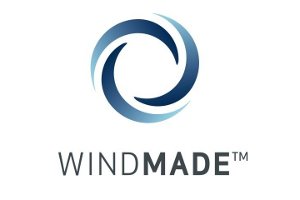 The first global consumer label that identifies a product made from wind power.
The first global consumer label that identifies a product made from wind power.
I am composing this blog post on a computer that was likely assembled in a factory that runs on electricity made from coal. The aluminum for the case and other parts of the computer probably came from a smelter powered by natural gas. The electricity powering the computer here in California could come from a combination of natural gas, from hydropower, wind power, or a solar thermal plant that uses the Sun’s energy to create steam, turn a turbine and make electricity. But this is educated guesswork on my part.
We can pick up a chocolate bar, coffee, or other stuff at Trader Joe’s and read the label to see where it was made, whether or not it’s organic, if the people who grew it were paid a just wage, and how much high-fructose corn syrup is involved. Doesn’t it seem like the next step is to know what kind of energy was used to make it? Soon you’ll be able to go to a store and buy a product you know was made from pure, clean wind energy.
The Global Wind Energy Council, WWF, the LEGO Group, the UN Global Compact, and others announced an initiative to create the first global consumer label that identifies a product made from wind power; they call themselves the WindMade consortium. The announcement came in late January at the World Economic Forum in Davos, Switzerland—the uber gathering of world-grade economic movers and shakers. The consortium plans to disseminate the WindMade label through what it calls a “good corporate citizen initiative” that includes 6,200 corporations in more than 130 countries.
“We hope that this will create a strong element of consumer pull which will accelerate the pace of wind energy development globally,” says Ditley Engel, CEO and President of Vestas Wind Systems, who pioneered the initiative. But it’s not just wind energy the consortium is pushing. The group wants to create labels for products made from solar energy, biomass, and other renewable sources.
